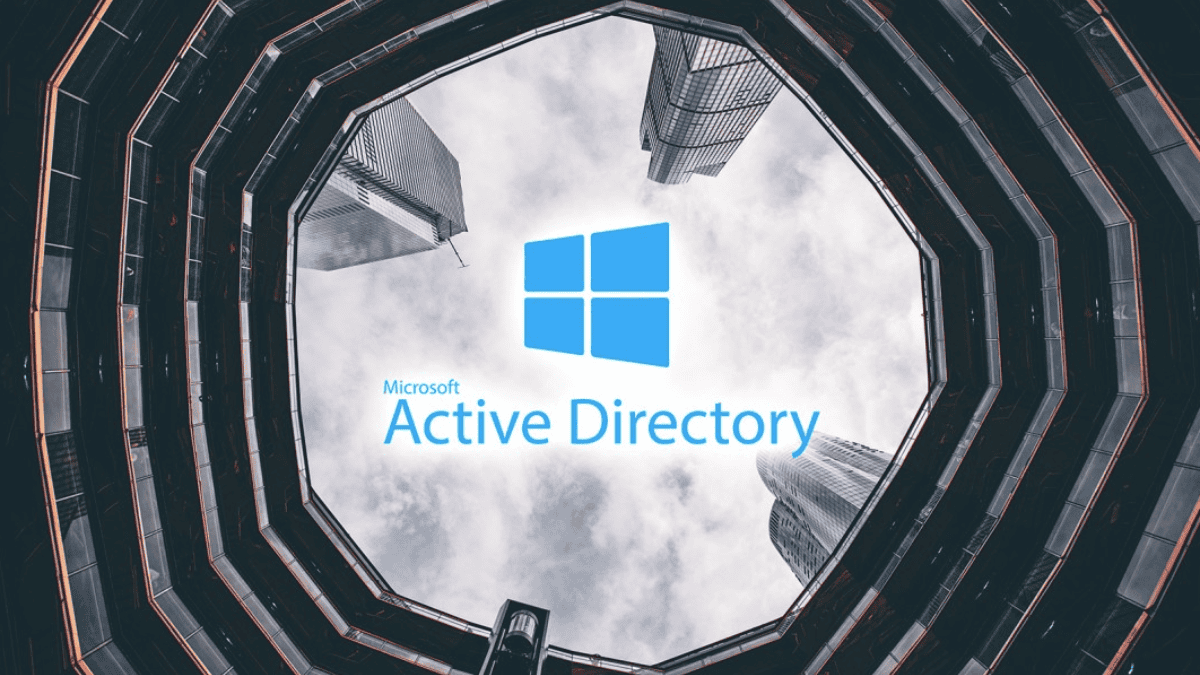Active Directory (AD) plays a significant role in managing network resources and user profiles within small to medium-sized enterprises (SMEs). Understanding its core functions and importance can help SMEs leverage its capabilities effectively, especially when considering IT support outsourcing to streamline operations and reduce overhead.
What is Active Directory?
Active Directory is a directory service developed by Microsoft that is used for managing computers, users, and other resources in a network. It stores information about members of the domain, including devices and users, and enables IT administrators to manage permissions and access to network resources.
Importance of Active Directory for SMEs
Active Directory is crucial for SMEs as it simplifies the administration of network resources, enhances security, and improves productivity. Here are some key reasons why it is essential for these businesses:
| Benefit | Description |
| Centralized Management | Enables management of all devices and accounts in one place |
| Improved Security | Offers tools for protecting sensitive data and controlling access |
| Cost-Efficiency | Reduces administration costs by centralizing common tasks |
| Streamlined Processes | Automates repetitive tasks, freeing up IT resources |
Utilizing Active Directory, SMEs can ensure that their IT environment is well-organized, secure, and poised for growth. This understanding of AD's capabilities positions these businesses to make informed decisions about their IT infrastructure.
Centralized Network Management
Active Directory plays a critical role in centralized network management, especially for small and medium enterprises (SMEs). It enhances user authentication and authorization while offering comprehensive group policy management.
User Authentication and Authorization
User authentication and authorization are vital components in managing access to network resources. With Active Directory, SMEs can ensure that only authorized personnel access sensitive data and systems.
Implementing Active Directory for user authentication and authorization, businesses can enhance security and simplify the login process for employees.
Group Policy Management
Group Policy Management within Active Directory allows SMEs to enforce security policies and configurations across multiple users and devices from a centralized location. This functionality streamlines IT administration and ensures consistent policy application.
Utilizing group policy management can significantly improve operational efficiency and enhance security measures for SMEs, ensuring that all connected devices adhere to organizational policies.
Enhanced Security
Security is a paramount concern for small and medium-sized enterprises (SMEs). Active Directory plays a crucial role in enhancing security measures within the organization, providing tools for managing user access and maintaining system integrity.

Control Over Access Permissions
Active Directory enables organizations to establish precise control over access permissions. Administrators can set permissions that determine who has access to specific files, applications, and systems. This structured approach enhances security and ensures that sensitive information is only available to authorized personnel.
This level of control helps prevent data breaches and ensures compliance with various regulations and policies.
Password Policies and Security Measures
Password security is fundamental to safeguarding sensitive information. Active Directory provides mechanisms for enforcing robust password policies within an organization. These policies help mitigate the risk of unauthorized access.
Implementing these security measures, SMEs can maintain tighter control over user access and protect their assets more effectively. Active Directory in IT not only streamlines user management but also fortifies the security framework that is essential for today's business landscape.
Streamlined IT Administration
Active Directory significantly enhances IT administration processes in small and medium enterprises (SMEs) by automating various tasks and simplifying software deployment.
Automated User Account Management
Managing user accounts manually can be time-consuming and prone to errors. Active Directory automates user account management, which includes functions such as creating, modifying, and deleting user accounts. This automation not only saves time but also reduces the risk of human error.
The table below outlines the time savings associated with automated user account management compared to manual processes.
| Task | Manual Process Time (Hours) | Automated Process Time (Hours) | Time Savings (Hours) |
| User Account Creation | 1 | 0.25 | 0.75 |
| User Account Modification | 0.5 | 0.1 | 0.4 |
| User Account Deletion | 0.5 | 0.1 | 0.4 |
The automation feature allows IT staff to focus on strategic initiatives rather than routine tasks, enhancing overall productivity.
Simplified Software Deployment
Active Directory simplifies software deployment across a network. By employing group policies, organizations can manage software installations and updates centrally, ensuring that all users have access to the necessary applications without the need for individual setups.
The table below illustrates the differences in deployment time using traditional methods versus Active Directory.
| Software Deployment Method | Typical Time for Deployment (Hours) | Active Directory Deployment Time (Hours) | Time Savings (Hours) |
| Manual Installation | 2 | 0.5 | 1.5 |
| Centralized Deployment | N/A | 1 | N/A |
With the ability to push updates and new software packages efficiently, SMEs can ensure that their teams remain equipped with the most current tools needed for their work.
Active Directory plays a crucial role in streamlining IT administration by providing automation for user account management and simplifying software distribution. This ultimately leads to a more organized and efficient IT environment for small businesses.
Scalability and Flexibility
Active Directory provides significant scalability and flexibility benefits for small and medium enterprises (SMEs) as they grow and evolve. This system allows businesses to adapt to changes in their IT environment without substantial disruptions.
Easy System Integration
Active Directory enables seamless integration with various applications and systems. This functionality is essential for SMEs that rely on multiple tools to run operations. By using standardized protocols, Active Directory ensures that new software can connect with existing systems effortlessly.
This ability to integrate systems not only saves time but also enhances productivity as employees can focus on their tasks rather than grappling with IT issues.
Scalability for Growing Businesses
Active Directory supports the growth of SMEs by allowing organizations to scale their IT infrastructure easily. As a business expands, it can add new users, devices, and applications without the need to overhaul the existing system.
This flexibility makes it easier for SMEs to adapt to market demands and changes in their operational scale. Active Directory helps ensure that businesses remain agile and responsive while maintaining control over their IT resources.
Cost-Effectiveness
Active Directory proves to be a valuable asset for small and medium enterprises (SMEs), particularly in terms of cost-effectiveness. By streamlining various IT processes, it significantly reduces overhead and enhances resource allocation.

Reduced IT Overhead
Implementing Active Directory can lead to substantial reductions in IT overhead costs. By consolidating administrative tasks, it minimizes the time and effort required for routine management. This reduction translates into lower labor costs, as fewer staff hours are dedicated to user management and system maintenance.
The following table illustrates the potential cost savings associated with Active Directory implementation:
| Task | Traditional Method Cost (Annual) | Active Directory Method Cost (Annual) | Savings (%) |
| User Account Management | $5,000 | $2,000 | 60% |
| Software Deployment | $3,000 | $1,200 | 60% |
| Security Management | $4,000 | $1,500 | 62.5% |
| Total Savings | $12,000 | $4,700 | 60.83% |
Efficient Resource Allocation
Active Directory enhances efficient resource allocation by centralizing network management functions. It provides IT administrators with tools to deploy resources effectively, ensuring that hardware and software assets are utilized optimally. By reducing the complexity of managing multiple systems and accounts, Active Directory allows for better utilization of existing resources.
The following table shows resource allocation improvements when using Active Directory compared to traditional methods:
| Resource Type | Traditional Allocation (Annual) | Active Directory Allocation (Annual) |
| Server Utilization (%) | 65% | 85% |
| User Account Maintenance Cost | $3,000 | $1,200 |
| Software License Usage (%) | 70% | 90% |
To further enhance network performance and security, it’s essential to understand the differences between private and public DNS servers. Our article, What You Need to Know About Private and Public DNS Servers, breaks down how each type impacts your network’s speed, reliability, and control.
Navigate Change with Confidence — LK Tech
Implementing Active Directory helps SMEs gain deeper insights into resource usage, leading to cost savings and smarter IT asset management. This structured system aligns seamlessly with business operations, promoting both efficiency and security in managing IT services. At LK Tech, we deliver top-notch IT support tailored to your unique needs, ensuring reliable systems and seamless integration.
As a trusted IT company in Cincinnati, we’ve helped countless businesses strengthen their IT infrastructure. Reach out to us today to discover how we can elevate your technology setup.


